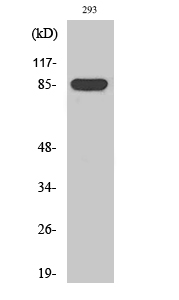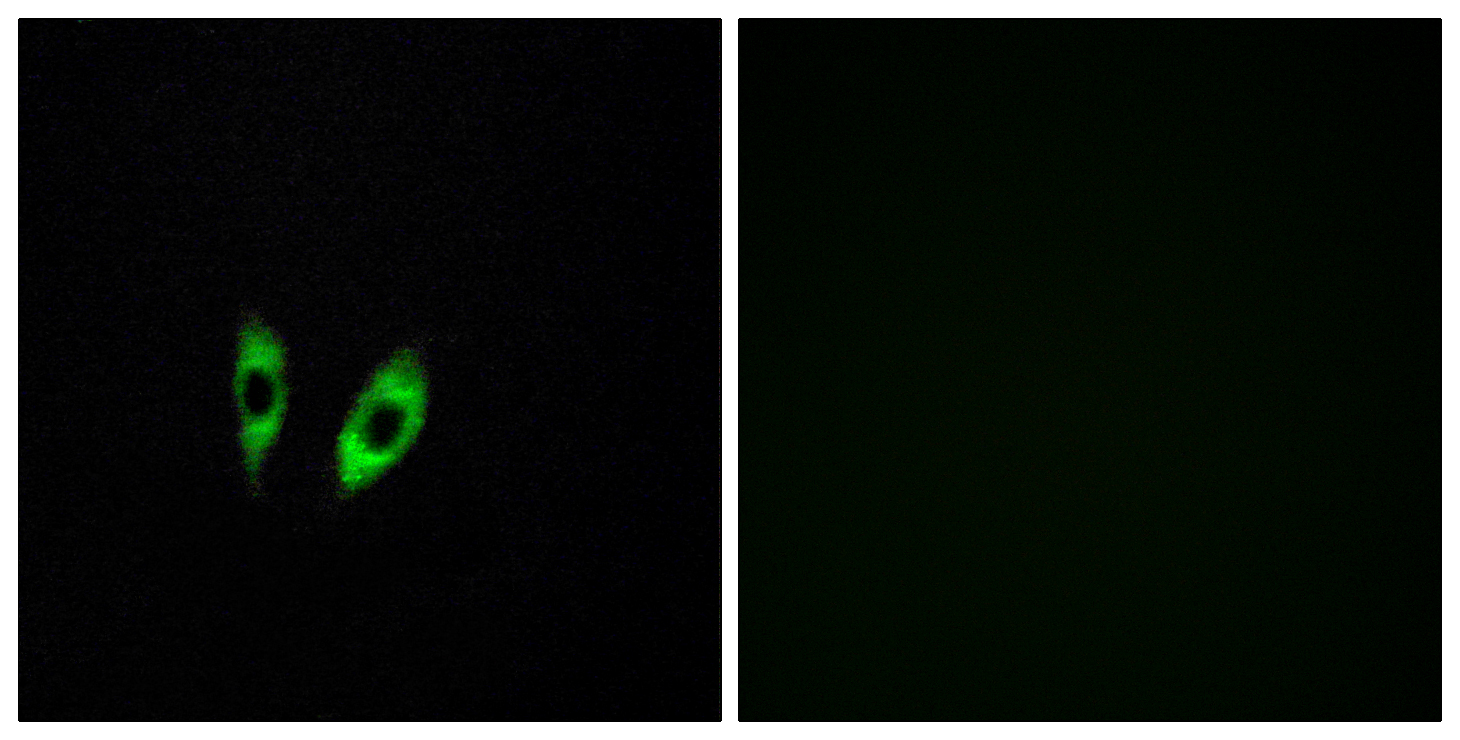GPR156 Polyclonal Antibody
- Catalog No.:YT1987
- Applications:WB;IF;ELISA
- Reactivity:Human;Rat;Mouse;
- Target:
- GPR156
- Fields:
- >>Neuroactive ligand-receptor interaction
- Gene Name:
- GPR156
- Protein Name:
- Probable G-protein coupled receptor 156
- Human Gene Id:
- 165829
- Human Swiss Prot No:
- Q8NFN8
- Mouse Swiss Prot No:
- Q6PCP7
- Immunogen:
- The antiserum was produced against synthesized peptide derived from human GPR156. AA range:501-550
- Specificity:
- GPR156 Polyclonal Antibody detects endogenous levels of GPR156 protein.
- Formulation:
- Liquid in PBS containing 50% glycerol, 0.5% BSA and 0.02% sodium azide.
- Source:
- Polyclonal, Rabbit,IgG
- Dilution:
- WB 1:500 - 1:2000. IF 1:200 - 1:1000. ELISA: 1:5000. Not yet tested in other applications.
- Purification:
- The antibody was affinity-purified from rabbit antiserum by affinity-chromatography using epitope-specific immunogen.
- Concentration:
- 1 mg/ml
- Storage Stability:
- -15°C to -25°C/1 year(Do not lower than -25°C)
- Other Name:
- GPR156;GABABL;PGR28;Probable G-protein coupled receptor 156;G-protein coupled receptor PGR28;GABAB-related G-protein coupled receptor
- Observed Band(KD):
- 89kD
- Background:
- G protein-coupled receptors (GPCRs) are a large superfamily of cell surface receptors characterized by 7 helical transmembrane domains, together with N-terminal extracellular and C-terminal intracellular domains.[supplied by OMIM, Mar 2008],
- Function:
- function:Orphan receptor.,similarity:Belongs to the G-protein coupled receptor 3 family. GABA-B receptor subfamily.,tissue specificity:Ubiquitous expression both in the CNS and in peripheral tissues. Very high expression in fetal brain and testis relative to expression in other tissues.,
- Subcellular Location:
- Cell membrane; Multi-pass membrane protein.
- Expression:
- Ubiquitous expression both in the CNS and in peripheral tissues. Very high expression in fetal brain and testis relative to expression in other tissues.
- June 19-2018
- WESTERN IMMUNOBLOTTING PROTOCOL
- June 19-2018
- IMMUNOHISTOCHEMISTRY-PARAFFIN PROTOCOL
- June 19-2018
- IMMUNOFLUORESCENCE PROTOCOL
- September 08-2020
- FLOW-CYTOMEYRT-PROTOCOL
- May 20-2022
- Cell-Based ELISA│解您多样本WB检测之困扰
- July 13-2018
- CELL-BASED-ELISA-PROTOCOL-FOR-ACETYL-PROTEIN
- July 13-2018
- CELL-BASED-ELISA-PROTOCOL-FOR-PHOSPHO-PROTEIN
- July 13-2018
- Antibody-FAQs
- Products Images

- Western Blot analysis of various cells using GPR156 Polyclonal Antibody

- Immunofluorescence analysis of HeLa cells, using GPR156 Antibody. The picture on the right is blocked with the synthesized peptide.

- Western blot analysis of lysates from 293 cells, using GPR156 Antibody. The lane on the right is blocked with the synthesized peptide.



